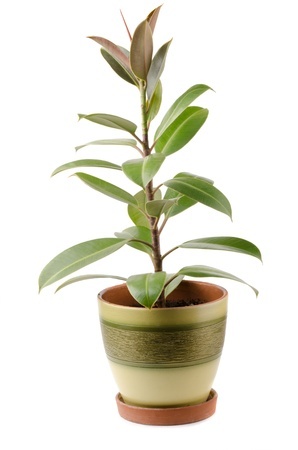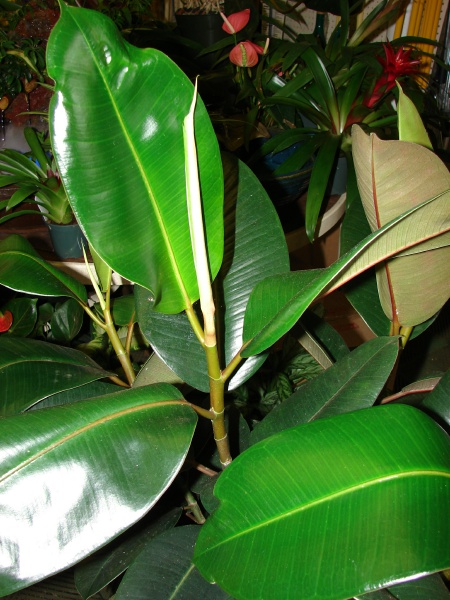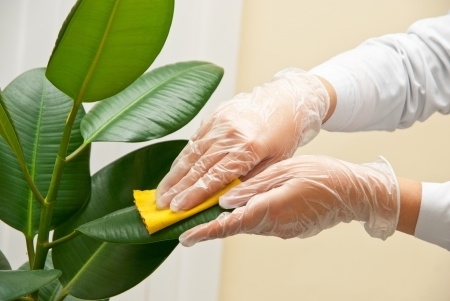





There are a number of Ficus elastica varieties grown successfully indoors which includes, "the most common one" F.elastica decora (has shiny leather type leaves which grow to a foot long), F.elastica robusta (has larger leaves than decora), F.elastica black prince or burgundy (has near black reddish leaves) and a selection of variegated types.
How it looks and displaying: The rubber plant is all about having a small tree indoors with broad shiny attractive leaves. When this plant is about 1 - 2ft tall it's well suited sitting as a centrepiece on a table, on a shelf, or on a windowsill, but once it begins to grow above 3ft it looks great standing next to a fireplace, television area or near door entrances (as longs as their are no cold drafts).
I prefer the decora which has plain green leaves, but others like other leaf color variations and there is a nice choice.
Once the plant begins to mature and grow in height it's common to train and support the trunk and branches by staking or tying them back to keep them growing upright.
Care level: This species is quite an easy plant to care for and can grow well on low light. The worst a grower can do (which are common mistakes) is over-water, move the plant around too much or to a spot with less light or with colder temperatures. Sudden drops of temperature or cold drafts are also not good.



Cleaning: Your plants leaves will appreciate being cleaned gently with tepid water and you will enjoy the glossy clean dust free look. Use a very soft cloth or sponge.
Loss of leaves: Most common cause is over-watering, which will need attention asap (renew top soil or re-pot --pot up--). Other conditions can also cause leaves to drop including, low temperatures, not enough light or cold drafts. Moving your plant from a bright location to dim can also cause leaf drop. It's normal for some of the bottom leaves to turn yellow and drop, but do check if conditions are OK.
Leaf edges yellowing: This is really a process of elimination. The problem could be poor soil, under-feeding, or too much water. You'll need to check each one of the care instructions above and eliminate what your doing well and try to find the cause.
Pests: Mealy bug, scale and mites are common pests that like to cause this ficus tree problems.
Copyright © www.100flowers.win Botanic Garden All Rights Reserved